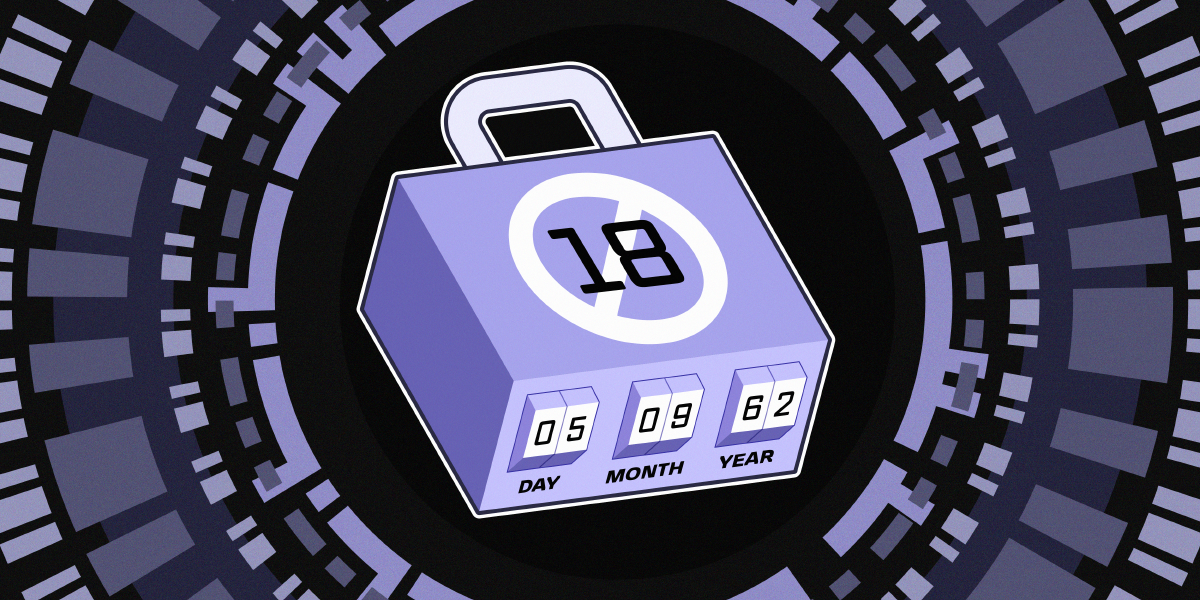Online Child Safety: The UK's Online Safety Act And Its Shortcomings

Welcome to your ultimate source for breaking news, trending updates, and in-depth stories from around the world. Whether it's politics, technology, entertainment, sports, or lifestyle, we bring you real-time updates that keep you informed and ahead of the curve.
Our team works tirelessly to ensure you never miss a moment. From the latest developments in global events to the most talked-about topics on social media, our news platform is designed to deliver accurate and timely information, all in one place.
Stay in the know and join thousands of readers who trust us for reliable, up-to-date content. Explore our expertly curated articles and dive deeper into the stories that matter to you. Visit Best Website now and be part of the conversation. Don't miss out on the headlines that shape our world!
Table of Contents
Online Child Safety: The UK's Online Safety Act and its Shortcomings
The UK's Online Safety Act, lauded as a landmark piece of legislation designed to protect children online, has finally come into force. But is it enough? While the Act aims to tackle online harms such as cyberbullying, online grooming, and exposure to harmful content, concerns remain regarding its effectiveness and potential shortcomings. This article delves into the key provisions of the Act and examines the criticisms leveled against it.
What the Online Safety Act Aims to Achieve:
The Act places significant responsibilities on tech companies, classifying them as either "larger" or "smaller" based on user numbers. Larger companies face far stricter obligations. Key aims include:
- Protecting children from illegal content: This includes child sexual abuse material (CSAM), and content promoting self-harm or suicide. Platforms are legally obligated to proactively remove this content and prevent its spread.
- Mitigating the spread of harmful content: This covers a wider range of material, including content promoting violence, hate speech, and misinformation, that could harm children's well-being.
- Age verification measures: The Act pushes for stronger age verification methods to prevent children from accessing inappropriate platforms and content.
- Transparency and accountability: Tech companies are required to publish transparency reports detailing their efforts to comply with the Act. Ofcom, the UK's communications regulator, has increased powers to enforce the Act and impose significant fines for non-compliance.
Shortcomings and Criticisms:
Despite its ambitious goals, the Online Safety Act faces considerable criticism:
- Enforcement Challenges: Critics argue that enforcing the Act's provisions across a vast digital landscape will be incredibly complex and resource-intensive. Monitoring and removing harmful content in real-time, particularly in the face of sophisticated evasion tactics, poses a significant challenge for both tech companies and Ofcom.
- Defining "Harm": The Act's definition of "harm" remains a point of contention. The breadth of this definition could lead to over-censorship and stifle freedom of expression. The line between harmful and simply offensive content remains blurry and open to interpretation.
- Impact on Free Speech: Concerns persist about the potential for the Act to lead to censorship of legitimate content, particularly concerning political discourse and artistic expression. Striking the right balance between protecting children and preserving free speech is a delicate task.
- Lack of Focus on Prevention: While the Act focuses heavily on reactive measures (removing harmful content), critics argue that it lacks sufficient emphasis on preventative strategies, such as education and promoting digital literacy amongst children and young people. [Link to a relevant government resource on online safety education].
- Accountability for Smaller Platforms: The Act's provisions are less stringent for smaller platforms. This creates a loophole, potentially allowing harmful content to proliferate on less-regulated sites.
The Road Ahead:
The Online Safety Act represents a significant step towards protecting children online in the UK. However, its success hinges on effective enforcement, clear guidelines, and a collaborative effort between government, tech companies, and parents. Ongoing monitoring and evaluation of the Act’s impact are crucial to address its shortcomings and ensure it truly achieves its goals of creating a safer online environment for children. Further legislative refinement and a greater emphasis on preventative measures are likely to be necessary in the future.
Call to Action: Parents are encouraged to engage in open conversations with their children about online safety and utilize available resources to help protect them from online harms. [Link to a relevant parental online safety resource]. Staying informed about the Online Safety Act and its implications is crucial for everyone concerned with creating a safer digital world for children.

Thank you for visiting our website, your trusted source for the latest updates and in-depth coverage on Online Child Safety: The UK's Online Safety Act And Its Shortcomings. We're committed to keeping you informed with timely and accurate information to meet your curiosity and needs.
If you have any questions, suggestions, or feedback, we'd love to hear from you. Your insights are valuable to us and help us improve to serve you better. Feel free to reach out through our contact page.
Don't forget to bookmark our website and check back regularly for the latest headlines and trending topics. See you next time, and thank you for being part of our growing community!
Featured Posts
-
 Cardi B And Rah Alis Cannes Airport Fight Speaker Throwing Accusation And Response
Aug 02, 2025
Cardi B And Rah Alis Cannes Airport Fight Speaker Throwing Accusation And Response
Aug 02, 2025 -
 Ambassador Zbogars Statement Slovenias Position On Ukraine At The Un Security Council
Aug 02, 2025
Ambassador Zbogars Statement Slovenias Position On Ukraine At The Un Security Council
Aug 02, 2025 -
 College Footballs Next Two Way Player Koi Perich Aims High
Aug 02, 2025
College Footballs Next Two Way Player Koi Perich Aims High
Aug 02, 2025 -
 Grading The Reds Acquisition Of Hayes A 2025 Mlb Trade Review
Aug 02, 2025
Grading The Reds Acquisition Of Hayes A 2025 Mlb Trade Review
Aug 02, 2025 -
 After Six Years Starbucks Finds Human Connection Beats Tech Focused Strategy For Gen Z
Aug 02, 2025
After Six Years Starbucks Finds Human Connection Beats Tech Focused Strategy For Gen Z
Aug 02, 2025
Latest Posts
-
 Mc Laurin Trade Odds Predicting The Star Receivers Next Team
Aug 02, 2025
Mc Laurin Trade Odds Predicting The Star Receivers Next Team
Aug 02, 2025 -
 12 Year Old Yu Zidi Wins Bronze In World Aquatics Relay China Celebrates
Aug 02, 2025
12 Year Old Yu Zidi Wins Bronze In World Aquatics Relay China Celebrates
Aug 02, 2025 -
 Nfl Postseason Contenders A Deep Dive Into The Fringe Teams 2023 Prospects
Aug 02, 2025
Nfl Postseason Contenders A Deep Dive Into The Fringe Teams 2023 Prospects
Aug 02, 2025 -
 Post Deadline Mlb Power Rankings Where Do The Padres Stand
Aug 02, 2025
Post Deadline Mlb Power Rankings Where Do The Padres Stand
Aug 02, 2025 -
 Junior Pga Charlie Woods Strong Showing Boosts Ryder Cup Chances
Aug 02, 2025
Junior Pga Charlie Woods Strong Showing Boosts Ryder Cup Chances
Aug 02, 2025
